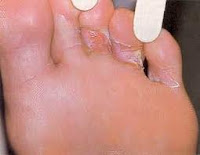Ecology is about the pattern of nature.
It is the study of the interactions among living organisms and their environment.
Every living thing depends on other things for survival.
What Is a Habitat?
A habitat is a place where an organism lives, and it provides the organism with the essentials of life so that it can carry out all the seven life processes.
A habitat provides animals with food, shelter and water
A habitat provides plants with light, water and a place to grow
Different habitats have different environmental condition such as temperature and amount of water.
the habitat of a plant or animal must provide all the things that it needs to live and reproduce.
Different plants and animals have different needs. For example a gerbil can survive on less water than a mouse. This is because it has the features that help it to survive. We say that it is adapted to its environment.
Classifying animals
When we put plants and animals into groups we say that we classify them.
- Animals with backbones are called vertebrates
- Animals without backbones are called invertebrates
- Mammals are a class of vertebrate, air-breathing animals whose females are characterized by the possession of mammary glands while both males and females are characterized by hair and/or fur
- Reptiles are characterized by laying shelled eggs and having skin covered in scales. Reptiles are classically viewed as having a "cold-blooded" metabolism.
- Birds are winged, warm-blooded, egg-laying, vertebrate animals.
- Amphibians ( from Amphi- meaning "on both sides" and -bios meaning "life"), such as frogs, salamanders, and caecilians, are cold-blooded animals that develop from a juvenile water-breathing form, either to an adult air-breathing form, or retains some juvenile characteristics.
- Fish is any aquatic vertebrate animal that is covered with scales, and equipped with two sets of paired fins and several unpaired fins. Most fish are "cold-blooded"
Examples of Invertebrates
Mollusc
Annelids
Flatworms
Arthropods
Coelenterates
Now let's classify green plants
There are hundreds of thousand of different plants, so we didide them into smaller groups to help us to identify and to study them.
There is more than one way of doing this.
Some plants have a special transport system for food and water called a vascular system. So we call these plants vascular plants.
Plants without a vascular system are called non-vascular plants.
Questions
- What is the meaning of the word habitat?
- Explain why organisms are adapted to their environment





































